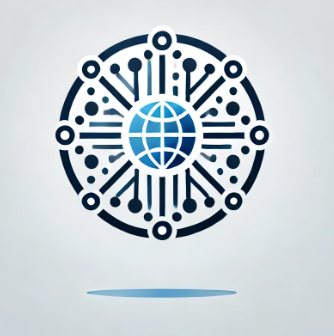GNU General Public License
History of the GNU General Public License
The GNU General Public License (GPL) was first released in 1989 by Richard Stallman, a prominent advocate for free software and the founder of the Free Software Foundation (FSF). The origins of the GPL can be traced back to Stallman’s work on the GNU Project, which he initiated in 1983. The goal of the GNU Project was to create a completely free Unix-like operating system, known as GNU (a recursive acronym for “GNU’s Not Unix”), which would give users the freedom to run, modify, and share software without restriction.
Early Challenges and the Need for a License
During the early 1980s, software was increasingly becoming proprietary, with companies restricting access to source code and limiting the ways in which software could be used and shared. Stallman, who was working at the Massachusetts Institute of Technology (MIT), witnessed firsthand the negative impact of these restrictions on collaboration and innovation. He believed that software should be freely available for anyone to use, study, and improve.
In response to the growing trend of proprietary software, Stallman launched the GNU Project and, subsequently, the Free Software Foundation (FSF) in 1985 to promote the development and use of free software. However, Stallman recognized that merely releasing software as “free” was not sufficient to protect users’ freedoms. He needed a legal framework that would ensure that software released as free would remain free, even as it was modified and redistributed by others.
Development of the GNU General Public License
To address this need, Stallman began drafting the GNU General Public License. The GPL was designed to embody the principles of software freedom, providing legal mechanisms to ensure that these freedoms were preserved. The key innovation of the GPL was the concept of “copyleft,” which turned traditional copyright on its head. While copyright law generally restricts the ways in which a work can be used, copied, and modified, copyleft uses copyright law to require that these freedoms be granted to all users of the software.
The first version of the GPL, known as GPLv1, was released in 1989. This initial version established the basic tenets of the license, including the requirement that any derivative works based on GPL-licensed software must also be released under the GPL. This provision ensured that the freedoms to use, study, modify, and share the software would be perpetuated in all future versions and derivatives.
Evolution of the GPL
The GPL continued to evolve over the years to address new challenges and changes in the software landscape. In 1991, the second version of the GPL (GPLv2) was released. GPLv2 included several improvements and clarifications over the first version, such as better handling of software distribution and compatibility with other licenses. This version became widely adopted and played a crucial role in the growth of the free and open-source software movement.
The third version of the GPL (GPLv3) was released in 2007 after a lengthy public consultation process. GPLv3 addressed issues that had arisen since the release of GPLv2, including compatibility with international copyright law, digital rights management (DRM), and software patents. One of the key additions in GPLv3 was the “anti-tivoization” clause, which aimed to prevent manufacturers from using hardware restrictions to effectively lock down GPL-licensed software.
Impact and Legacy
The GPL has had a profound impact on the software industry and the broader digital landscape. It has enabled the development of numerous free and open-source software projects, fostering a collaborative environment where innovation can thrive. The GPL’s principles have inspired other licenses and movements advocating for software freedom and openness.
Prominent software projects licensed under the GPL include the Linux kernel, the GNU Compiler Collection (GCC), and the MySQL database system. These projects have become foundational components of the modern computing infrastructure, demonstrating the lasting significance of the GPL in promoting software freedom and collaboration.
In summary, the history of the GNU General Public License is a testament to the vision and determination of Richard Stallman and the Free Software Foundation. Through the creation and evolution of the GPL, they have provided a robust legal framework that safeguards the freedoms essential to the development and use of free software, ensuring that these freedoms are preserved for future generations.
Defining the GNU General Public License
The GNU General Public License (GPL) is a widely used free software license that plays a crucial role in the free and open-source software movement. It guarantees end users the freedom to run, study, share, and modify the software. This definition encompasses several core principles and legal mechanisms designed to protect these freedoms, making the GPL a cornerstone of software freedom and collaborative development.
Core Principles of the GPL
- Freedom to Run the Program: The GPL allows users to run the software for any purpose without restrictions. This principle ensures that the software can be used in any field of endeavor, from academic research to commercial applications.
- Freedom to Study the Source Code: Users have access to the source code of the software, which is essential for understanding how the software works. This transparency enables users to learn from the software and adapt it to their specific needs.
- Freedom to Share the Software: The GPL permits users to distribute copies of the original software to others. This provision encourages the sharing of software, fostering a collaborative environment where users can benefit from each other’s work.
- Freedom to Modify and Distribute Derivatives: Users can modify the software and distribute their modified versions. This principle ensures that improvements and adaptations can be freely shared with the community, promoting continuous innovation and development.
The Principle of Copyleft
The defining feature of the GPL is its use of copyleft, a legal mechanism that ensures the freedoms granted by the license are preserved in all derivative works. Copyleft leverages copyright law to require that any modified versions or derivative works of GPL-licensed software must also be licensed under the GPL. This means that if a developer modifies GPL-licensed software and distributes it, they must also make their modifications available under the same license.
Copyleft ensures that the software remains free and open for all users, preventing any party from taking the software, making changes, and then distributing it under a more restrictive license. This principle distinguishes the GPL from more permissive licenses, such as the MIT License or the Apache License, which allow derivative works to be released under different terms.
Versions of the GNU General Public License
The GPL has undergone several revisions to address emerging issues and incorporate feedback from the software community. Each version of the GPL builds upon the core principles while adapting to new legal and technological challenges.
- GPLv1: Released in 1989, the first version of the GPL established the basic framework for software freedom and copyleft. It provided a legal foundation for the distribution and modification of free software.
- GPLv2: Released in 1991, the second version included clarifications and improvements to address practical issues encountered with GPLv1. GPLv2 became widely adopted and remains one of the most popular versions of the license.
- GPLv3: Released in 2007, the third version introduced significant updates to address issues such as compatibility with international copyright laws, digital rights management (DRM), and software patents. GPLv3 also included provisions to prevent “tivoization,” where hardware restrictions could prevent users from running modified versions of the software.
Compatibility and Exceptions
The GPL is designed to be compatible with other free software licenses, enabling code from different projects to be combined. However, this compatibility is subject to certain conditions. For instance, when combining GPL-licensed code with code from another license, the resulting work must comply with the terms of the GPL. This ensures that the combined work remains free and open.
The GPL also allows for certain exceptions through additional permissions, which can be specified by the copyright holder. These exceptions enable developers to grant additional rights or relax certain conditions of the license, providing flexibility for specific use cases while maintaining the core principles of software freedom.
Legal and Ethical Considerations
The GPL is not just a legal document but also a statement of ethical principles regarding software development and distribution. By enforcing copyleft, the GPL promotes a culture of sharing and collaboration, where improvements and innovations are accessible to all. This ethos aligns with the broader goals of the free software movement, which advocates for user rights and the democratization of technology.
Impact and Adoption
The GPL has had a profound impact on the software industry, enabling the development of numerous influential projects. The license has been adopted by a wide range of software, from operating systems like the Linux kernel to applications like the GNU Compiler Collection (GCC) and content management systems like WordPress. This widespread adoption underscores the GPL’s effectiveness in promoting software freedom and fostering a vibrant, collaborative community.
In summary, the GNU General Public License is a foundational tool for ensuring software freedom. By guaranteeing the rights to run, study, share, and modify software, and by enforcing these rights through copyleft, the GPL fosters an environment of collaboration and innovation that benefits users and developers alike.
Clarifying the GNU General Public License
The GPL aims to protect the freedom of software users and developers in several key ways:
- Freedom to Use: Users can run the software for any purpose without restrictions.
- Freedom to Study and Modify: Users have access to the source code, enabling them to understand how the software works and make modifications.
- Freedom to Share: Users can distribute copies of the original software.
- Freedom to Share Modifications: Users can distribute copies of modified versions of the software, provided these modifications are also licensed under the GPL.
The GPL is distinct in its requirement that any distributed derivative works must also be licensed under the GPL, ensuring that the freedoms it grants are preserved in all copies and derivatives of the software.
Examples of the GNU General Public License
Several well-known software projects are licensed under the GPL, demonstrating its widespread adoption and impact:
- Linux Kernel: One of the most notable examples, the Linux kernel, is licensed under the GPL. This has contributed significantly to its widespread use and development by a global community of developers.
- GNU Compiler Collection (GCC): Another cornerstone of the free software movement, GCC is a collection of programming compilers developed under the GNU Project.
- WordPress: The popular content management system (CMS) used by millions of websites worldwide is licensed under the GPL, allowing extensive customization and redistribution.
- GIMP: The GNU Image Manipulation Program (GIMP), a powerful image editing tool, is another example of GPL-licensed software.
Involving the GNU General Public License
The GPL has influenced the development and distribution of software globally. Its principles have inspired other licenses and movements promoting software freedom. Developers and organizations adopting the GPL contribute to a collaborative environment where software can be freely used, modified, and shared, fostering innovation and community-driven development.
By understanding the history, definition, and implications of the GNU General Public License, developers and users can appreciate its role in promoting software freedom and its lasting impact on the software development landscape.



